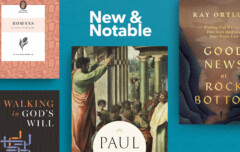Last week I began a new series of articles on the seven ecumenical councils of the early church. These councils commenced with the First Council of Nicaea in 325 and concluded with the Second Council of Nicaea in 787. Between these two events were five more, each of which attempted to understand and establish a unified Christian theology.
In this series we will take a look at each of the seven councils. For each one we will consider the setting and purpose, the major characters, the nature of the conflict, and then the results and lasting significance. We continue today with the First Council of Constantinople.
Setting & Purpose
The First Council of Constantinople was held in Constantinople, modern day Istanbul, Turkey. It was convened by Theodosius I who at that time was Emperor of the Eastern Roman Empire. The council met from May to July, 381.
The council was convened to try to unite a church that remained divided over the issue of Christ’s nature and his relationship with the Father. Though the First Council of Nicaea had already attempted to reach consensus, Arianism and other heterodox understandings remained a battleground in every region of the empire.
Major Characters
There were 150 Eastern bishops present at the council and among them were a handful of notable characters.
Meletius, bishop of Antioch served as the first president of the council, but died shortly after it began.
Gregory of Nazianzus was elected bishop of Constantinople at the start of the council and, after the death of Meletius, took over as president. However, shortly thereafter, the legality of his election was challenged based on a canon from the Council of Nicaea that bishops cannot be transferred from see to see (Gregory had previously been bishop in Sasima). This dispute prompted Gregory to resign from the bishopric and presidency.
Nectarius was a civil official who was quickly baptized so he could take over as bishop of Constantinople and president of the council when Gregory stepped down.
The Conflict
The main business of the council was to reestablish the doctrine that had been set forth in the Nicene Creed. They did this by writing a new creed to remove some of the language of the Nicene Creed that had proven controversial and problematic. They also adding further clarification at other points where doctrine had developed a little further, or where orthodoxy was being challenged.
One specific area where doctrine had developed was in regard to the Holy Spirit. The council attributed four things to the Holy Spirit:
- “a divine title, ‘Lord,’
- divine functions of giving life which He possesses by nature and of inspiring the prophets,
- an origin from the Father not by creation but by procession,
- supreme worship equal to that rendered to Father and to Son” (from Leo Donal Davis, The First Seven Ecumenical Councils).
The council sought to use biblical language to describe the Spirit so as to make the doctrine as palatable as possible to all present. Nevertheless, thirty-six Macedonian bishops left because they were not willing to accept such high language for the Holy Spirit. Eustathius of Sebaste represented their view when he said, “For my part I neither choose to name the Holy Spirit God, nor should I presume to call him a creature.”
The Result
The foremost result of the Council was the Creed of Constantinople. It was very similar to the Nicene Creed, but it removed the anathema against Arianism.
We believe in one God, the Father Almighty, Maker of heaven and earth, and of all things visible and invisible. And in one Lord Jesus Christ, the only-begotten Son of God, begotten of the Father before all worlds (aeons), Light of Light, very God of very God, begotten, not made, being of one substance with the Father; by whom all things were made; who for us men, and for our salvation, came down from heaven, and was incarnate by the Holy Ghost of the Virgin Mary, and was made man; he was crucified for us under Pontius Pilate, and suffered, and was buried, and the third day he rose again, according to the Scriptures, and ascended into heaven, and sitteth on the right hand of the Father; from thence he shall come again, with glory, to judge the quick and the dead; whose kingdom shall have no end. And in the Holy Ghost, the Lord and Giver of life, who proceedeth from the Father, who with the Father and the Son together is worshiped and glorified, who spake by the prophets. In one holy catholic and apostolic Church; we acknowledge one baptism for the remission of sins; we look for the resurrection of the dead, and the life of the world to come. Amen.
Apart from reaffirming the faith of Nicaea, the council also approved several other items. Most noticeable was the canon asserting that “The Bishop of Constantinople shall have primacy of honor after the Bishop of Rome, because Constantinople is the new Rome.” In the time between Nicaea and Constantinople, Constantine had rebuilt and dedicated Constantinople as the new capital of the Roman empire. Assuming such authority for the bishop of Constantinople was a threat to Rome and the power of her bishop. It was considered a serious affront because there was no spiritual significance to Constantinople (whereas Rome’s bishopric claimed to have succeeded from Peter). This seemingly small change would cause all manner of grief in the centuries to come.
Lasting Significance
The First Council of Constantinople was significant theologically and administratively. Leo Donal Davis (cited above) aptly summarizes each: “Theologically, it had carried on the logic of the Council of Nicaea and cautiously applied that Council’s reasoning about the Son’s relation to the Father to the Holy Spirit, though confining its statement to biblical terminology. Administratively, the Council continued the eastern practice of accommodating the ecclesiastical organization to the civil organization of the Empire, sowing the seeds of discord among the four great sees of East and West by raising the ecclesiastical status of Constantinople to correspond to its civil position as New Rome.”
The council was significant, but many councils would remain before there would be that unified Christian doctrine.









